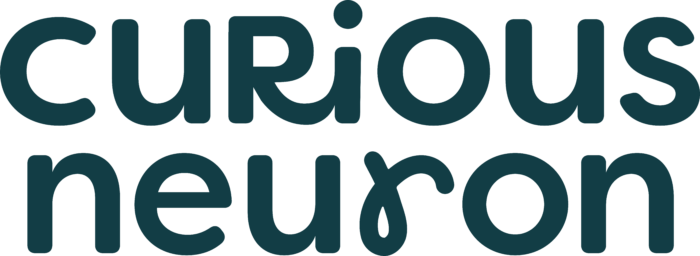I receive many questions from parents inquiring about Autism so I thought it would be important to inform parents and teachers about this topic. Here is some info on Autism Spectrum Disorders (ASD).
What are Autism Spectrum Disorders (ASD)?
https://faculty.washington.edu/chudler/aut.html
Autism Spectrum Disorders are complex brain-based disorders. ASD consists of such a wide spectrum that each person is uniquily affected. The Centers for Disease Control and Prevention characterize ASD as a developmental disability that can cause significant social, communication, and behavioral challenges. There is nothing different about someone’s physical appearance that differentiates them from someone without ASD. Nonetheless, people with ASD may communicate, interact, behave or learn differently from others. Cognitive skills (learning, thinking and problem-solving) vary greatly from person to person. One individual with ASD may have high levels of intellectual functioning, while another might have severe intellectual challenges.
What causes ASD?
Researchers have yet to pinpoint the cause(s) of ASD. Researchers do know that ASD stems from a disruption in brain development caused by a combination of genetic components and environmental components, however, they are not sure how. To date, a number of genes have been identified as having a role in ASD, making the puzzle even more complicated for researchers. When the brain is developing in the mother’s womb, many environmental factors, such as maternal infection, can interfere with brain development. A disruption in the environment can alter a gene and therefore change how the brain is developing in the womb. Also, taking vitamins during pregnancy are important for many reasons including making sure iron levels are not low.
What are the signs and symptoms?
Signs of developmental delays can be seen within the first 18 months of life. While other children (25%-40%) can have near-normal development and begin to show signs of delay only after the age of 2 (Amaral et al. 2008, Trends in Neurosciences). When it comes to ASD, early diagnosis and intervention ARE KEY. It is important for parents to know the developmental milestones starting from birth. Although not all children develop at the same rate, there are still some important milestones they need to meet, therefore, if a parent can detect them quickly it can help quicken the possible diagnosis of an ASD. This could also help start treatment more quickly as well, which is critical for ASD. One interesting area of research is a group from University of Rochester Medical Center that is training parents not only on the milestones but on what to do if certain milestones are delayed.
Some signs include:
-
Not babble by 12 months
-
Not responding to their name by 12 months
-
Avoiding eye contact
-
Delayed speech and language skills
-
Does not point or respond to pointing
-
Flaps hands, rocks body or spins in circles
For a full list of symptoms please visit the Centers for Disease Control and Prevention website.
What happens to the brain when a child has an ASD?
Brain scientists have shown that there are early brain changes that occur in the period in which autistic behaviours are first emerging. Changes such as brain volume overgrowth (Hazlett et al. 2017, Nature). They have suggested that there is an increase rate in brain growth before the age of 2 (Hazlett et al. 2011, Arch Gen Psychiatry), but the reasons behind this growth are not well understood. Given that ASD are characterized by 3 core areas including: social impairments, communication deficits and repetitive behaviours, many areas of the brain have been implicated (see picture below). These numerous symptoms make it difficulty to study the brain.
On the other hand, some parts of the brain are smaller in individuals with ASD. Areas such as the amygdala, a part of the brain involved in emotions, and the hippocampus, which is invloved in long-term memory (Bauman and Kemper. 2005, Int. J. Devl Neuoscience).
Brain areas that have been implicated in the mediation of the three core behaviors that are impaired in autism: social behavior, language and communication, and repetitive and stereotyped behaviors. Amaral et al. 2008, Trends in Neurosciences.
Speech and language in children with ASD.
I would like to thank two Speech-Language Pathologists, Stephanie and Maria-Lisa. Below you will find some information they provided on speech and language in relation to ASD.
1) What is the role of a Speech-Language Pathologist (SLP) in working with children with Autism Spectrum Disorder (ASD)?
Speech and language therapy is a central part of treatment for children diagnosed with Autism Spectrum Disorder (ASD). While SLPs cannot diagnose autism, they are often one of the first points of contact, as communication difficulties are typical in children with ASD. However, seeing as though autism is not limited to communication difficulties, a multidisciplinary team is needed to diagnose the disorder. Parents are an integral part of this team!
2) How does ASD affect speech communication and social development?
The signs of autism are often noticed before the age of 3 and some children may exhibit signs of future issues within the first 18 months. In relation to speech and language, children with autism can demonstrate difficulties in the following areas:
Social skills
– some early signs may include reduced eye contact, having difficulty playing with others, difficulties transitioning from one activity to another, and trouble sharing interest on an object with another person, known as joint attention.
Communication skills
– some early signs include difficulty using gestures such as pointing and waving, trouble following directions, difficulty understanding and learning new words.
3) What is the best time to begin speech and language therapy with children diagnosed with ASD?
The sooner the better! Early intervention is key. All children diagnosed with autism do not demonstrate the same exact profile, therefore, as SLPs, we continually assess and manage the best way to provide therapy that is both individualized (focusing on the child’s areas of need, their interests and most importantly their strengths) as well as interactive and fun! Parents and educators are highly encouraged to actively participate in the intervention process so that it can carryover to the child’s daily life.
Students with ASD.
We need to consider that every student with ASD is unique. Individualized Education Programs (IEP) also need to take this into account. Language abilities, learning styles, behaviour and attention need to be assessed on an individual basis and incorporated into their IEP. Most importantly, their learning environment needs to consider their sensory needs, behavioural needs as well as language needs. Although some students with an ASD might be similar to the class in terms of cognition and knowledge, other needs can make it difficult for them to learn. Please keep in mind that while some students with an ASD might be advanced in cognitive abilities, others might have severe cognitive difficulties. You can refer to this guide for an elaborate document on Effective Educational Practices for Students with ASD.
Here are a few tips to keep in mind:
-
Voice volume: A student might have difficulty knowing when to speak softly or loudly. Some teachers might use verbal cues to help a student learn to manage this, but this might not work with a child with ASD. Using a visual cue to guide them might help. Click here to see a “control-o-meter” example. You can even use this meter for physical proximity and place it on their desk for others to learn more about them as well. (See picture above)
-
Verbal instructions: Keep it short and simple. Break instructions down into smaller steps.
-
Eye contact: Do not insist on eye contact, especially if they are not comfortable with this.
-
Collaborative planning in addition to an IEP: Given the complexity of ASD, it is important to incorporate educators, parents and other professionals (Speech -Language Pathologist, psychoeducators/behaviour specialists, learning experts such as from the Curious Neuron team) that work with the student to create a collaborative learning plan for them.
-
Assisted technology: Being able to type things out might help a student with note taking, group work, or even communicating with others.
-
Fixations: A student with ASD might become fixated on an object. Use this to your advantage to help motivate them in learning activities. If they are fixated on an object in class, you can have them change parts of a problem solving question to include the object. For instance, if they really like the figurine of a Dr. Seuss character on your desk, change the names in their homework to that character.
-
Daily schedule: Does the student need visual or verbal reminders of their daily schedule? Environmental changes (homeroom to gym class, class time to lunch), a change in teacher and so on, might be difficult for them. Let them know in advance and provide them with reminders (i.e. pictures of recess, lunch time, the next teacher they will see, a bus etc.).
-
Sensory issues: Does the student react to noise levels in their surrounding? Does their behaviour change if someone is too close to them? Most students with ASD will have some sensory issues, although the issue might vary greatly. Some might not like it when others approach them or are too close to them, while others might want to keep touching people and objects. You can use a visual Meter such as the one here, to help with this issue. You can provide them with headphones if the class is doing some group work and it gets loud. If they have a need to touch objects, find some tactile stimulation that you can leave at their desk.
-
Adapting to social situations: To help a student understand a social situation, a Comic Strip Conversation could be a way to help them better understand it through visual representation.
-
Universal Design for Learning (UDL) principles (see link below): The UDL framework, which is defined as a set of principles for curriculum development that give all individuals equal opportunities to learn (CAST, 2012), requires educators to provide students with multiple means of representation, multiple means of action and expression, and multiple means of engagement. This approach may help include a student with ASD.
-
Feedback and encouragement: Give lots of positive feedback and encouragement. Make sure you don’t focus solely on their challenges, but on their talents as well. Also, just like with all students, comments such as “good job!” are too vague. Provide specific comments such as “I like the colors your selected for your painting” or “You were really organized this week and I noticed you didn’t forget your assignment at home”.
Resources for teachers:
-
https://www.iidc.indiana.edu/pages/Teaching-Tips-for-Children-and-Adults-with-Autism
-
http://archive.brookespublishing.com/documents/boser-udl-for-students-with-autism.pdf
-
http://www.edugains.ca/resourcesSpecEd/IEP&Transitions/Samples/Elementary/E-Autism.pdf
-
http://www.edu.gov.on.ca/eng/general/elemsec/speced/autismSpecDis.pd
-
http://archive.brookespublishing.com/documents/boser-udl-for-students-with-autism.pdf
Cindy Hovington, Ph.D, Founder Curious Neuron
Maria-Lisa Bozzo, M.H.Sc. (A), SLP (C). Agoo Children’s Health Center
Stefanie Cortina, M.H.Sc. (A), SLP (C).













